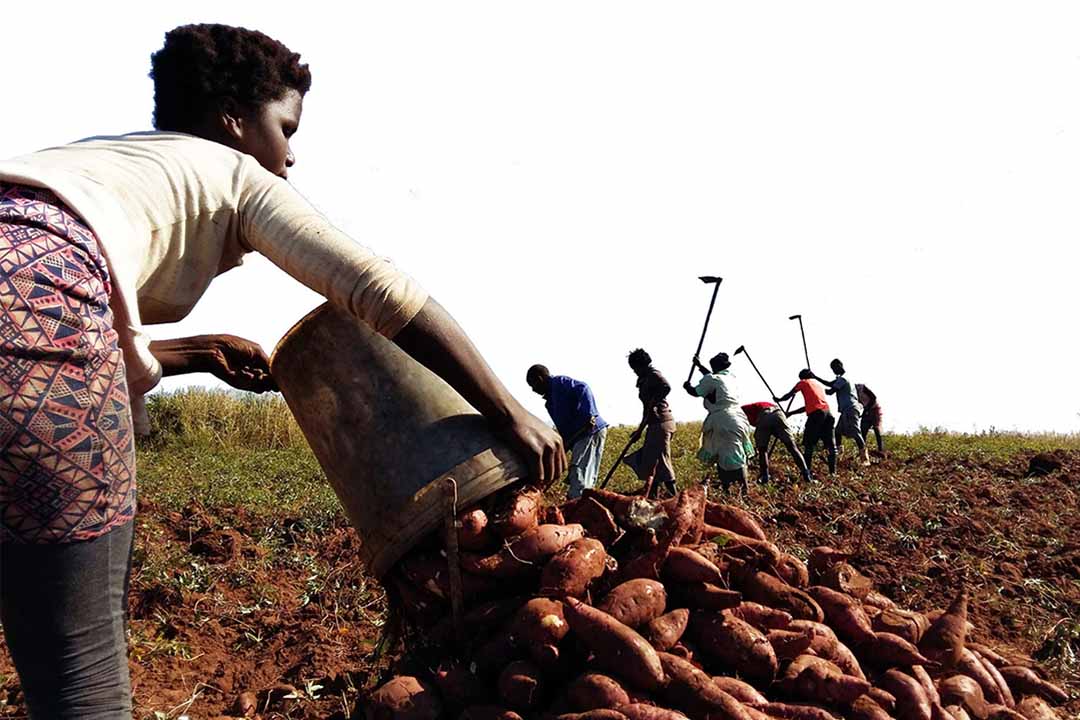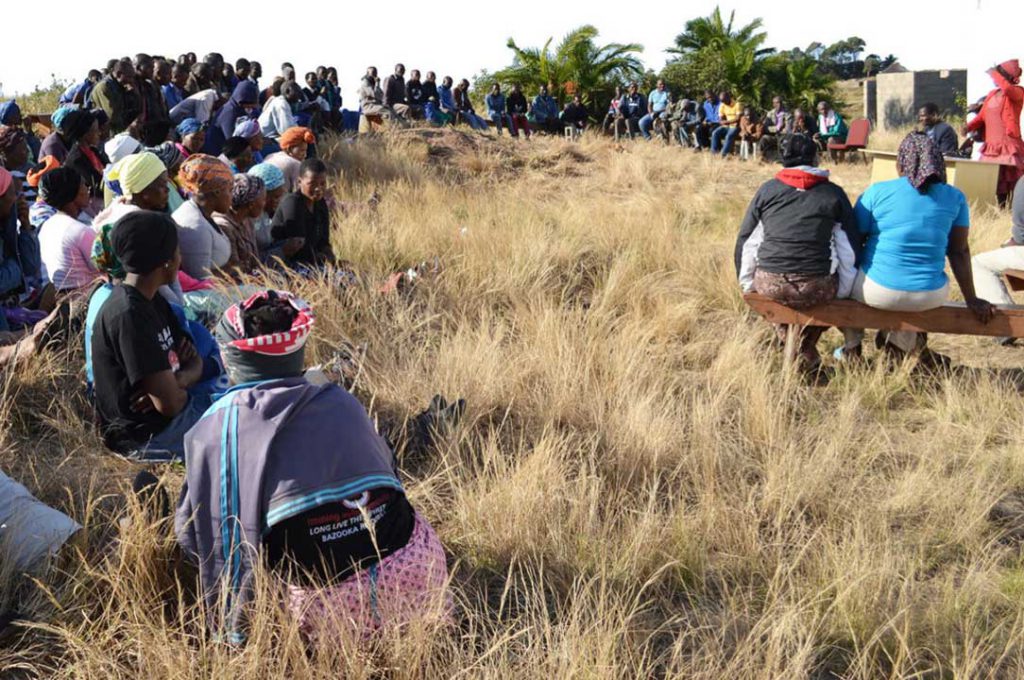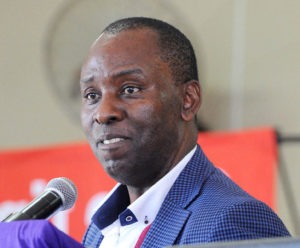
A small farming community is fighting an epic battle against an international mining giant
Xolobeni, a community of 200 small farmers running herds of cattle and farming a patchwork of fields of crops and home gardens, looks like a romanticised version of African peasant life. The heart of the AmaPondo way of life, its hills roll and tumble into valleys and ravines, and then into the spectacular Indian Ocean. It feels pristine and peaceful.
The district, in South Africa’s Eastern Cape province, lies some 230 km south of the port city of Durban. In its time the community has seen off colonial expansion and the apartheid state. Now it is faced with Jacob Zuma’s version of democracy, in which a ruthless and narrow-minded kleptocracy have raided the national coffers almost at will. Once again, Xolobeni’s fate hangs in the balance. Zuma and his henchmen may be a relatively small faction, but they have shown that they are prepared to bulldoze, and even shoot, opposition out of the way.
Meanwhile, our post-modern society turns on the new technology of instant communication. With it has come a corporate-inspired addiction to cellphones and similar tech. For Xolobeni, the problem is that these devices need at least one of the minerals that lie undisturbed in its red dune fields.
The earth’s geology has presented the community with an unwelcome gift: a giant deposit of nine-million tons of ilmenite, a major ingredient of titanium. The 139-million ton deposit is said to be worth millions, even billions. Estimations vary wildly, but based on calculations relating to prices, output estimations and figures from available documents, the value is about R2.4 billion, says Dick Forslund, economist at the Alternative Information and Development Centre.
Xolobeni has had a long, if reluctant, association with mining. Although on the periphery of mainstream society, the Amadiba tribe were never defeated by the British empire in the 19th century, nor even by the apartheid regime in the 20th century. But the community’s men and women tasted the bitter defeat of separation and dissolution under the migrant labour system operated by the great gold mines in Johannesburg, far to the north. And as the decades of wage and social abuse have passed, a strong sense of Xolobeni as a gentler heartland, an authentic place of home and traditional culture, has endured.
It was into this idyllic landscape on the Wild Coast, with its slow rhythms of peasant life, that Mark Caruso strode in at the turn of the century. Chairman of Mineral Commodities, a subsidiary of global mining company MSR, this Australian tough guy with a heart of iron had set his eyes on Xolobeni’s red gold. Caruso, who was said to be backed by British finance, had the support of government, which gave him a mining licence in 2007. The process was stop-start but when Mineral Resources Minister Mosebenzi Zwane, a known associate of the Gupta family, took over in 2015, it was clear that mining was on the agenda. The company had the money and factional party power, and some support for its claim that mining would be good for the community. But to his surprise, Caruso soon stumbled on the rock of community resistance. And by his own behaviour, he soon gained even fewer friends in the community.
Indeed, he turned out to be something of a public relations nightmare for his backers. In 2015, in a letter to stakeholders, Caruso suggested that he would rain hellfire upon his community-based critics, borrowing from the famous (though inaccurately quoted) biblical lines delivered by an assassin character in Quentin Tarantino’s movie Pulp Fiction: “And I will strike down upon thee with great vengeance and furious anger…” Digging his hole deeper, he continued: “I am enlivened by [the] opportunity to grind all resistance to my presence and the presence of MSR into the animals [sic] of history as a failed campaign”. All this was recorded in the Sunday Times, South Africa’s most widely read newspaper.
Members of the Xolobeni community, many of them also supporters of the anti-mining movement, accused Caruso of tribal meddling and funding divide-and-rule strategies. They claimed he had set up proxies to carry out warlike activities against them. There were also reports that Caruso had fired guns, wielded machetes and allowed his men to parade around the community in new bakkies (light-delivery vehicles).
Xolobeni men who worked at his Tormin mine on South Africa’s west coast returned home with horror stories of maltreatment in “Australia” – for apparently, African workers entering that operation for the first time are told that this is where they are. Though profitable, the Tormin operation – which mines zircon, ilmenite, rutile, magnetite and garnet – has been accused of collapsing a chunk of coastline. Meanwhile, Caruso continued to sing the benefits his mining operation would bring to Xolobeni.
On a bumpy, windy, panoramic trip to Xolobeni in August 2016, I was privileged to overhear a Radio 702 interview during which Caruso outlined his and his company’s virtues while my companion, a young activist, waited to speak. We got out of the car and stood on a hill, the activist holding the phone to his ear as Caruso went on. When the activist finally got to speak, he asked bluntly: “How many more people are you going to kill?” Caruso dropped the line. The number of Xolobeni activists who have died in suspicious circumstances has risen slowly over the years, with as many as six dead so far. Some of the deaths, including one allegedly due to poisoning, happened several years ago.
The most recent, the murder of Sikhosiphi “Bazooka” Rhadebe – the popular chairman and leader of the mining resistance epicentre, the Amadiba Crisis Committee (ACC), who was shot and killed outside his home by two men claiming to be police officers while his 15-year-old son was in the house – occurred in March 2016. To date, no one has been charged with Rhadebe’s murder. Nevertheless, the circumstances suggest an assassination.

Surviving campaigners of the Pondoland revolt (1950-61) against apartheid laws still live among the people of Xolobeni. Whoever killed Rhadebe only succeeded in stimulating the AmaPondo’s long history of resistance. The AmaPondos’ oral history will record Rhadebe as another martyr.
His murder effectively ended discussions between the community and the mining company. Zuma’s deputy minister of police, Maggie Sotyu, was unable to placate them, even with ostensibly democratic dialogue; her every effort led to rejection. The relationship was not helped when heavily armed police were deployed to protect the speakers at an “outreach” meeting on July 20, 2016. Sotyu lashed out at the anti-mining activists for their “dishonest, destructive and downright disingenuous” behaviour at the meeting.
Without the community’s say-so, attempts at developing the mining operation had to be called off. In 2016, the minister had no option but to declare an 18-month moratorium on mining at Xolobeni, citing “significant social disintegration and a highly volatile current situation in the area”.
Attorney Henk Smith of the Legal Resources Centre in Cape Town hailed the decision as one of the most significant in the 12-year battle to keep Caruso’s MRC and their South African subsidiary, TEM, out of Xolobeni. “Will we ever have such a good case [again], where a community can decide if they want mining?”, he commented to the Daily Dispatch, a South African newspaper.
It was the first major victory for Xolobeni’s residents in the struggle to defend their land and way of life. But some activists don’t see it that way. Some are so deep in the game that any move initiated by the mining world will be viewed with distrust. Historically, mining has had a reputation for damaging bedrock communities, and Caruso and his company have done little to change that perception.

For Xolobeni, the focus has shifted to a proposed toll road on the Wild Coast, as an extension of the N2, a national road. It remains to be seen if the ACC and its supporters can withstand a new threat, this time from the road builders.
For one of the many qualities of the ACC is its ability to argue, and to do so publicly. Its organisational methods are enfolded in the mysteries of tribal and communal relationships, which are not open to public understanding. But the committee’s use of the simple press release has been extraordinarily successful.
At almost every turn in the battle against Caruso and his company there has been a press release arguing the facts of the case as seen by the ACC. Few rural tribespeople in the world can have made such skilful use of this public medium. Meanwhile, their opponents’ responses have been tongue-tied and stilted by comparison. Xolobeni may be far from urban centres, but the Xolobeni community are among the most vocal land-based activists in the world.
Over more than a decade of struggle, the ACC has built a support network among professionals, lawyers, academics and other social activists with better access to resources. Its network stretches across South Africa and also to international centres – even to the doorstep of Graham Edwards, who is CEO of a major UK property development company, Telereal Trillium, and who is thought to be Caruso’s backer.
This is fairly unique in South Africa: a poor, rural and marginal community has managed to create an alliance that cuts across rural, urban and international barriers. Government has complained that outsiders – white lawyers – are meddling. Yet as we have seen, the community has developed a network spanning a wide range of people. The government’s claim would appeal to a rightwing view of traditional African affairs.
The ACC’s polemic has spawned news reports, features, YouTube clips and even an international award-winning documentary film. There have been court challenges at every point. These have included hearings on environmental questions, during which the police were shown to have blatantly supported the mining-state alliance, and policy interventions, when thugs – allegedly linked to the mining company – were charged with the attempted murder and robbery of activists. The community has been challenged at every step, but it has made gains in the process.
Xolobeni has become known around the world as the symbol of a small, remote, rural community fighting against the odds to defeat the big men of Africa and the west. The proposed extension to the N2 toll road will likely see them continuing their struggle to preserve their community. For Xolobeni, the problem is that the road will bring the community within easy striking distance of the mine trucks. Here, the ACC is up against both the state and national opinion, which sees some sense in adding a final element to a road network that is currently interrupted at the border of the former independent Bantustan state of Transkei.
Parts of the new road are already under construction, one exchange and section at a time, from Nelson Mandela Bay to Port Edward. Meanwhile, the 18-month moratorium on mining is a pen stroke away from ending.
Sanral, the state’s dodgy but effective road-building agency, can be regarded as a formidable opponent. It has a large budget of R20.2 billion – R15.8 billion for “non-toll” roads and R4.4 billion for “toll” roads – and has more time and resources to represent its case. Promotions of its cause are already on YouTube, with any clip likely to be interrupted by a Sanral advert on the opportunities the Wild Coast toll road will bring to Pondoland.
Supposedly, these include technology, science, skills and training, hence more money, more jobs and greater economic security. There are few signs that the new road will attract the mass outrage that greeted Sanral’s attempts to force its toll roads on Gauteng.
True, the current road – the R61 road linking Durban to Mthatha via the South Coast and Pondoland – is narrow and dangerous, and there are sometimes accidents. For many, with no links to Xolobeni, the road might suggest “progress” and “development”, even if it divides the community.
Yet even official conservationists in the Eastern Cape appear to have cut a deal with Sanral, as a trade-off for Sanral’s potential rerouting of the road about 20 km inland. So far, as many as eight new protected areas have been declared along the coast. Whether Sanral keeps its end of the bargain remains to be seen. So far as is known, there is no written agreement on this.


